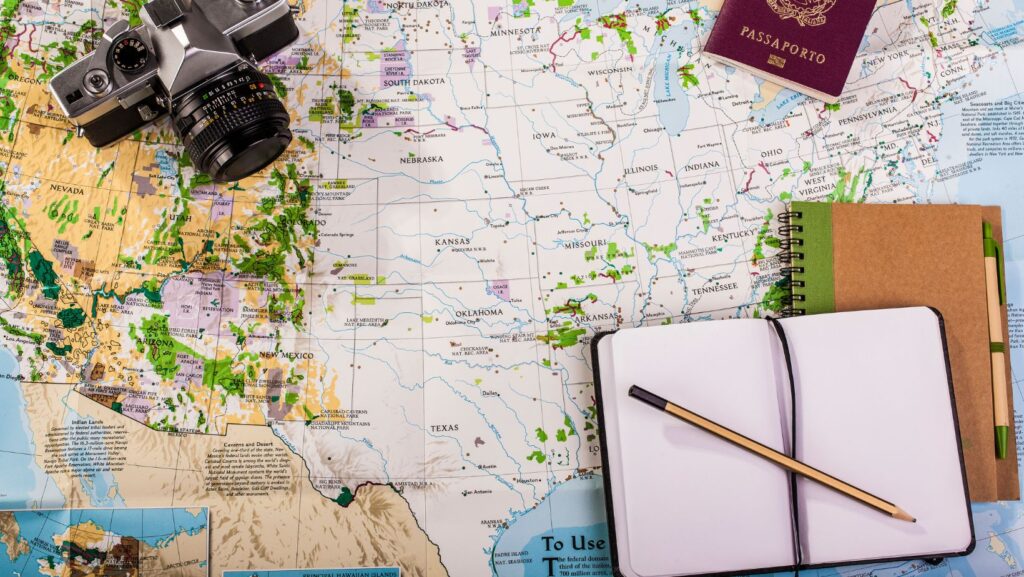In the digital age, one might question the relevance of travel guide books. Yet, there’s something undeniably special about flipping through the pages of a well-crafted guide, offering insights into unexplored locales and hidden gems. This article delves into the enduring appeal and significance of travel guide books.
Travel Guide Books
Travel guide books possess an ageless charm, bridging the gap between the traveled and the yet-to-be-explored. They offer readers an immersive experience, pouring out rich details of uncharted territories, cultures, and local secrets. No matter the age or type of traveler – adventure seeker, culture enthusiast, or a laid-back voyager – a detailed travel guide book can become an invaluable companion.
From Traditional Print to Digital Guides
 The advent of digital technology has made an unprecedented impact on travel guides. Traditional print guides may still be prevalent, but digital versions are gaining traction among modern travelers. These digital guides offer an interactive and customizable experience, culminating in a personalized journey for each traveler. For instance, interactive maps, real-time updates, and personalized itineraries are features bookish guides may lack. Despite this, print guides boast a tangible allure that many travelers find satisfying. Reading through a physical book evokes a sense of anticipation and a more tangible connection with the travel destinations.
The advent of digital technology has made an unprecedented impact on travel guides. Traditional print guides may still be prevalent, but digital versions are gaining traction among modern travelers. These digital guides offer an interactive and customizable experience, culminating in a personalized journey for each traveler. For instance, interactive maps, real-time updates, and personalized itineraries are features bookish guides may lack. Despite this, print guides boast a tangible allure that many travelers find satisfying. Reading through a physical book evokes a sense of anticipation and a more tangible connection with the travel destinations.
Key Historical Publications in Travel Literature
Delving into the annals of travel literature, a few significant publications come into view. “The Innocents Abroad,” published in 1869 by Mark Twain, recounts his journey abroad, aided by humorous and biting commentary, setting a lofty bar for travel literature. Another pivotal publication, “Baedeker’s Travel Guides,” became synonymous with travel books, offering tourists meticulously researched information about different destinations – consider it the Google Maps of the 19th-century traveler. More recent contributions like “Lonely Planet” series have become a mainstay for modern globetrotters, offering comprehensive and up-to-date information about a plethora of travel destinations worldwide. These historical publications illustrate the long-standing value and popularity of travel guide books.
Choosing the Right Travel Guide Book
Travel guides books serve as an invaluable companion for anyone with an itch for exploration, offering curated knowledge and firsthand accounts of various locales around the world. Identifying the right travel guide, however, necessitates careful consideration of certain factors and understanding one’s unique needs.
Factors to Consider
Upon delving into the selection process of travel guide books, several aspects merit particular attention.
-
Quality of Content – A good travel guide brims with accurate, updated information, credible recommendations, and engaging narratives. It presents travelers with an intimate understanding of their destination, blending notable landmarks, hidden gems, and friendly local advice.
-
 Type of Information Provided – Depending on a traveler’s interests, they may opt for guides that focus more on the historical and cultural aspects, outdoor activities, or culinary scenes of their chosen destination.
Type of Information Provided – Depending on a traveler’s interests, they may opt for guides that focus more on the historical and cultural aspects, outdoor activities, or culinary scenes of their chosen destination. -
Ease of Use – A thoroughly indexed, well-categorized guide, with vibrant images and maps for clarity, helps travelers to navigate with relative ease and convenience.
-
Book Format – Some prefer the tactile charm of traditional print guides, while tech-savvy travelers appreciate the flexibility of digital copies and their ability to include interactive features such as hyperlinks, embedded videos, and links to websites.
-
Ratings – A quick scan through feedback from fellow travelers can unveil the guide’s real-life performance, helping to gauge its utility and reliability.
Specialty Guides for Unique Needs
 In mirroring the diverse interests of explorers, the world of travel guide books hosts an array of specialty guides catering to unique needs.
In mirroring the diverse interests of explorers, the world of travel guide books hosts an array of specialty guides catering to unique needs.
-
Adventure Guides – Tailored for thrill-seekers, they provide information on adventure sports like hiking, snorkeling, or mountain climbing.
-
Culinary Guides – For traveling foodies, these guides focus on local eateries, delicacies, and, at times, regional cooking classes.
-
Art and Architecture Guides – For readers seeking immersion in the region’s art and architectural magnificence, these books are curated with in-depth knowledge of influential artists, architectural styles, and collection highlights.
-
Wildlife Guides – Ideal for nature enthusiasts, these guides concentrate on local flora and fauna, offering an insight into the region’s biodiversity.
In the quest to choose the right guide, considering these factors and recognizing one’s unique needs paves the way towards a well-informed, pleasant journey.




